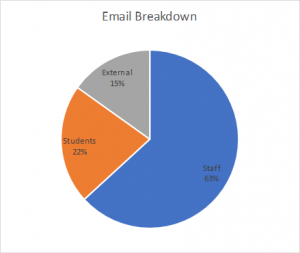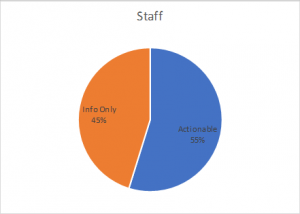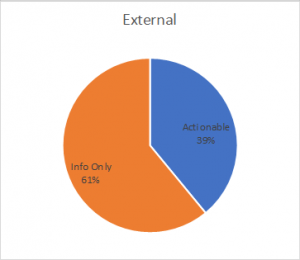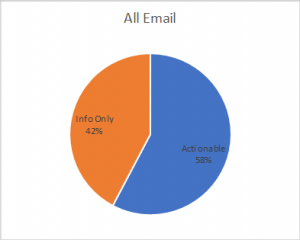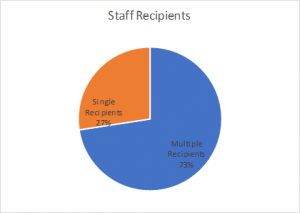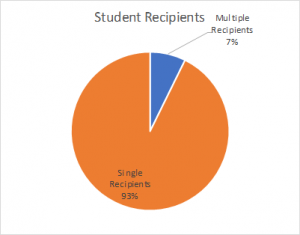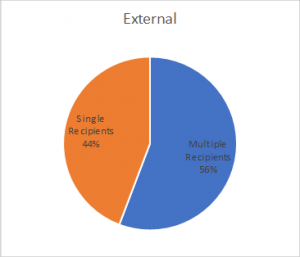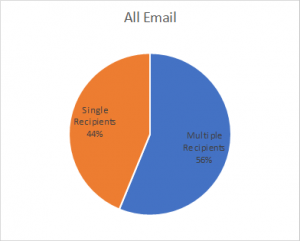A report was presented to staff showing that as an institution, we were indeed ‘ripe’ for a project based communication strategy rather than continuing with our approach using email.
- Graph 1 – Most communication is staff/staff
- Graph 2 – Most email between staff is actionable (ie. relates to a ‘project’ to be completed)
- Graph 3 – Most external mail is not actionable but is information from outside the institution
(this changes depending on school role – the closer to principal, the more actionable external emails become) - Graph 4 – Overall, most email is actionable around a project
- Graph 5 – Most email is sent to a group of people (or a ‘Team’). Only 27% of emails are single recipient.
- Graph 6 – When emailing students, most communications are single recipients
- Graph 7 – Externally, most of the email that comes to us is intended for multiple recipients
- Graph 8 – Overall, most of the email that comes to us is intended for multiple recipients
In short, most of our staff/staff communication is teams/project based communication. This is problematic within email as conversations are notoriously difficult to keep track of when people send responses out of read order, other emails appear within the timeline, people blend projects together in one email, and information within emails can appear out of chronological order when many people are reply to different components of projects without regard to all conversations about particular projects. The staff in the school were effectively making an argument for a different approach to communication via a solution like Teams having not realised how inefficient the system currently was, but now could see the reasoning behind adopting a new approach.
